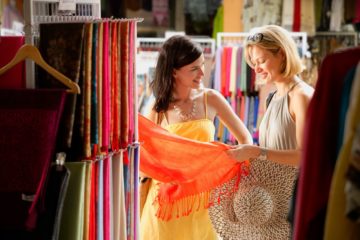As consumers become more environmentally conscious, the fashion industry is experiencing a significant shift towards sustainability. This blog explores the evolution of sustainable fashion practices, highlighting key strategies that brands are adopting and showcasing examples of those leading the way.
The Growing Importance of Sustainable Fashion
Environmental Impact: The fashion industry is one of the largest polluters globally, contributing to water pollution, carbon emissions, and textile waste. Sustainable fashion practices aim to mitigate these impacts by reducing resource consumption and waste.
Example: Patagonia has long championed environmental responsibility, using recycled materials and promoting repair and reuse through initiatives like their Worn Wear program.
Key Sustainable Fashion Practices
Eco-Friendly Materials: Brands are increasingly using sustainable materials such as organic cotton, recycled polyester, and innovative fabrics like Tencel™. These materials require fewer resources and generate less pollution compared to conventional textiles.
Example: Reformation uses eco-friendly materials and incorporates sustainable practices throughout their production process, making sustainability a core aspect of their brand identity.
Ethical Labor Practices: Sustainable fashion also involves ensuring fair labor practices and safe working conditions for garment workers. Brands committed to sustainability often prioritize ethical sourcing and transparency in their supply chains.
Example: People Tree partners with Fair Trade producers to ensure that their clothing is made ethically, supporting fair wages and safe working conditions for workers.
Circular Fashion: Circular fashion promotes designing for longevity, reuse, and recycling. This approach aims to keep clothing in use for as long as possible and reduce waste by creating closed-loop systems.
Example: The North Face’s “Renewed” collection offers refurbished products, giving new life to used items and reducing the need for new production.
Brands Leading the Sustainable Fashion Movement
Stella McCartney: Stella McCartney is a pioneer in sustainable luxury fashion, using eco-friendly materials and innovative practices to minimize environmental impact. The brand’s commitment to sustainability extends to every aspect of its operations, from design to packaging.
Example: Stella McCartney’s collections feature sustainable materials like organic cotton, recycled nylon, and vegetarian leather, showcasing that luxury fashion can be both stylish and sustainable.
Patagonia: Patagonia has built its brand on environmental responsibility, promoting sustainable practices and advocating for environmental causes. The company’s initiatives include using recycled materials, supporting grassroots environmental organizations, and encouraging consumers to repair and reuse their products.
Example: Patagonia’s Worn Wear program encourages customers to repair, share, and recycle their clothing, reducing waste and promoting a more sustainable approach to fashion.
Eileen Fisher: Eileen Fisher is committed to sustainable fashion through the use of organic and recycled materials, ethical labor practices, and innovative recycling programs. The brand’s vision is to create a circular system where nothing goes to waste.
Example: Eileen Fisher’s “Renew” program collects gently used clothing from customers and resells it, promoting the idea of a circular economy in fashion.
Conclusion
Sustainable fashion is more than just a trend; it is a necessary shift towards a more responsible and ethical industry. By adopting eco-friendly materials, ethical labor practices, and circular fashion principles, brands can reduce their environmental impact and meet the growing demand for sustainability. As consumers continue to prioritize sustainability, fashion brands that embrace these practices will lead the way in shaping a more sustainable future.


